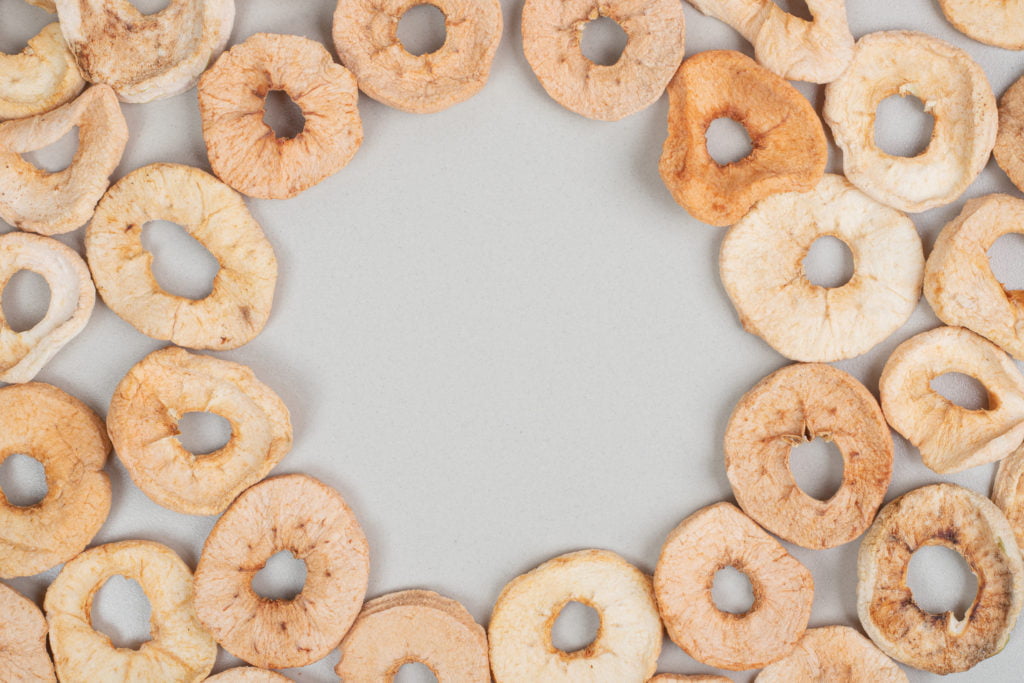Dehydrating Foods at Home
Dehydrating food is a great way to preserve it for later use. By removing the water from food, you remove the possibility for bacteria and mold to grow, making it a safer option for storage. In addition, dehydration concentrates the flavor of food, making it a more potent source of nutrition. There are many different foods that can be dehydrated at home, but some are better than others. Here are five of the best options.
Dehydrating Foods at Home:
1. Fruits
Dehydrating fruits is a great way to create healthy snacks that are perfect for on-the-go. Fruits are also packed with vitamins and minerals, making them a nutritious option for those looking to boost their health.

The best fruits to dehydrate are those that are tart and sweet, such as apples, pears, and pineapples. These fruits are high in fiber and Vitamin C, making them a healthy choice for snacks or meals. They also have a strong flavor that comes through when they are dehydrated, making them a tasty option.
2. Meats
Dehydrating meats is a great way to create jerky, which is a high-protein, low-fat snack that is perfect for those on the go. Jerky is also a good source of iron.
Dehydrating meats is a simple process that can be done at home with a dehydrator. All you need to do is cut the meat into thin strips and place it in the dehydrator. Make sure to spread the meat out evenly so that it dries evenly.
The amount of time it takes to dehydrate meat depends on the thickness of the strips and the temperature of the dehydrator. It usually takes between four and six hours to dehydrate meat. However, it is best to check on it regularly to make sure it doesn’t overcook.
3. Grains
Dehydrating grains is a great way to create flour, which can be used in a variety of recipes. Grains are also a good source of fiber.
There are a number of different grains that can be dehydrated at home, but some are better than others. Here are three of the best options.
Rice
Rice is a versatile grain that can be used in a variety of dishes. It is also a good source of fiber
and thiamin.
To dehydrate rice, simply spread it out on a dehydrator tray and dry for four to six hours. Make
sure to keep an eye on it to make sure it doesn’t overcook.
Quinoa
Quinoa is a nutrient-rich grain that is high in protein, fiber, and magnesium. It has a mild flavor
that makes it perfect for a variety of dishes.
To dehydrate quinoa, spread it out on a dehydrator tray and dry for four to six hours. Like rice,
make sure to keep an eye on it so it doesn’t overcook.
Buckwheat
Buckwheat is a nutrient-rich grain that is high in protein, fiber, and magnesium. It has a robust
flavor that makes it perfect for savory dishes.
To dehydrate buckwheat, spread it out on a dehydrator tray and dry for four to six hours. As
with rice and quinoa, make sure to watch it so it doesn’t overcook.
4. Vegetables
Much like fruits, dehydrating vegetables is a great way to purchasing a dehydrator that can be taken on the go. Vegetables are also a good source of vitamins and minerals, making them a healthy option for those looking to improve their overall health.

The best vegetables to dehydrate are those that are nutrient-rich and have a strong flavor. Some of the best options include carrots, bell peppers, and tomatoes. These vegetables are purchasing a dehydrator, making them a healthy choice for snacks or meals. They also have a robust flavor that comes through when they are dehydrated, making them a tasty option.
5. Beans
Dehydrating beans is a great way to create bean flour, which can be used in a variety of recipes. Beans are also a good source of protein.
Storing Dehydrated Foods
When dehydrating foods, it is important to store them in a airtight container once they are finished. This will help keep them fresh and prevent them from spoiling. You can store dehydrated foods in a pantry or cupboard, or you can store them in the fridge or freezer. If you choose to store them in the fridge or freezer, make sure to label the container with the date that the food was dehydrated.
Dehydrated foods are good for up to six months when stored in a cool, dry place. If you choose to store them in the fridge or freezer, they will be good for up to one year.
Buying the Dehydrator
When purchasing a dehydrator, it is important to consider the size of the machine. Dehydrators come in a variety of sizes, so it is important to choose one that will fit your needs. It is also important to consider the features of the dehydrator. Some machines have digital timers and temperature controls, while others do not. It is also important to consider the price of the dehydrator. Dehydrators range in price from around $30 to $300.
No matter what your budget is, there is a dehydrator that will fit your needs. The most important thing to consider when choosing a dehydrator is the size of the machine and the features that you want.
If you don’t have a dehydrator, you can also use your oven to dehydrate foods. Simply spread the food out on a baking sheet and place it in the oven. Make sure to keep an eye on it so it doesn’t overcook. The amount of time it takes to dehydrate food depends on the thickness of the strips and the temperature of the oven. It usually takes between four and six hours to dehydrate food in the oven.
Dehydrating foods is a great way to preserve them and create healthy, homemade snacks. By dehydrating your own food, you can save money and ensure that you know exactly what ingredients are in your snacks. Dehydrated foods are also a good source of fiber and protein.






